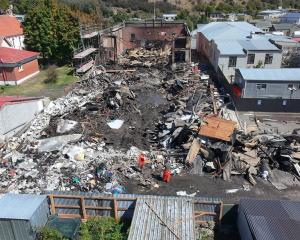
Contact Energy confirmed it was applying for resource consents for a raised boardwalk, jetty extension and land reclamation on the Kawarau Arm of the man-made lake.
In a statement, Contact said it planned to lodge all necessary applications by the end of the month and construction was flagged to begin early next year.
Extensive native plantings along the water’s edge were also on the energy company’s to-do list, and trial plantings were scheduled to begin in the coming months.
The work forms part of a wider landscape concept plan developed for Contact by Arrowtown outdoor architects Blakely Wallace in response to decreasing lake capacity due to silt accumulation.
The plan focuses on the section of lake shore between the confluence of the Clutha/Mata-Au River and the Kawarau River at the end of Butcher Dr.
It includes the extension of the jetty into the river channel as well as the construction of a boardwalk that begins in line with Achil St and passes below the new town hall before finishing at the Butcher Dr carpark.
The boardwalk will cross a yet-to-be established wetland planting area.
In recent years residents and lake users have complained of decreasing amenity values in the area as once swimmable beaches and usable boat ramps have become inundated with sludgy silt.
Contact said it had worked with mana whenua and community members on the plan, and two public workshops held last year were attended by more than 130 people.
At the workshops, Contact said ongoing silt removal was not an option and instead its focus was on aiding the lake’s inevitable transition at the location into something more closely resembling an alluvial river.
While committing to funding the project, Contact has not released details of any price tag associated with the work.
Contact said its plan included bilingual signage and "sculptural storytelling" — a mokihi raft had been suggested — as a way of incorporating mana whenua values.












